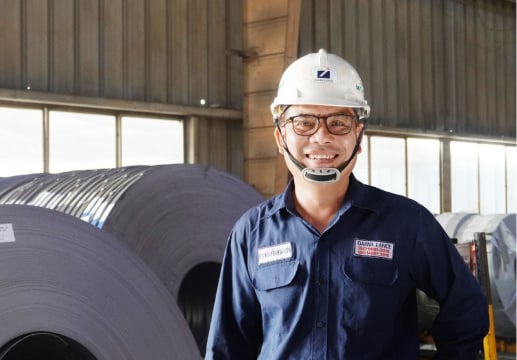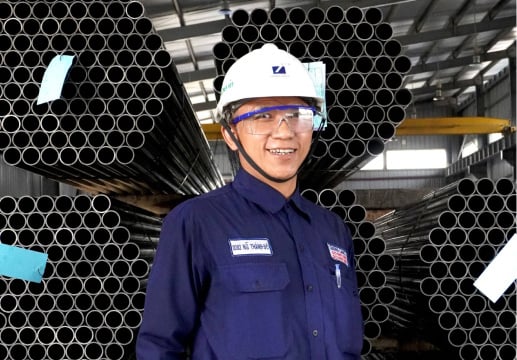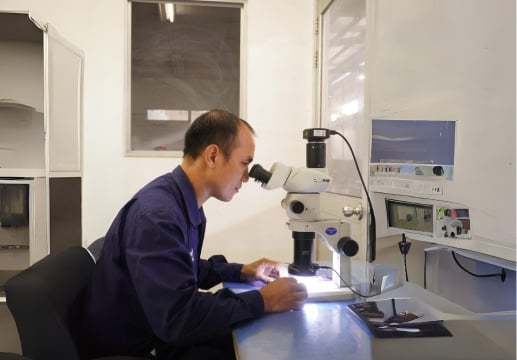Have you ever questioned why certain lance pipes endure intense heat while others fail? The secret lies in their heat resistance. As industries push the boundaries of efficiency and output, the need for lance pipes that can endure extreme temperatures has become increasingly crucial. In this blog article, let's explore together with us about the reason why we should choose Calorized Lance pipes with high heat-resistance.

Understanding Calorized Lance Pipes for Oxygen Blowing
Definition and Purpose of Calorized Lance Pipes
Calorized Lance Pipes, a type of oxygen lance pipes, are specialized pipes designed to deliver oxygen or other gasses into high-temperature environments. The capability of calorized layers and ceramic coatings helps Calorized Lance Pipes improve its heat resistance significantly. These protective layers act as barriers, preventing oxygen from reaching the underlying metal and causing oxidation.

Key Features of High-Quality Calorized Lance Pipes
High-quality lance pipes possess several essential features that contribute to their effectiveness and longevity in demanding industrial environments. Let's explore these key characteristics:
- Heat Resistance: Perhaps the most critical feature of Calorized Lance Pipes is their ability to withstand extreme temperatures. High-quality lance pipes are typically made from materials that can endure high temperatures. The melting point of steel is around 1,600°C, and at this temperature, the ordinary lance pipes without good refractory materials also start to show signs of melting. However, with the calorized and ceramic layers of high quality Calorized Lance Pipes, the melting process is significantly minimized.
- Durability: Calorized Lance Pipes must be able to withstand not only high temperatures but also mechanical stress and corrosive environments. Materials such as high-grade stainless steel or specialized alloys are often used to ensure longevity.
- Ease of Maintenance: Well-designed lance pipes should be easy to maintain and replace when necessary, minimizing downtime in industrial operations.
- Safety Features: Given the high-risk environments in which they operate, quality lance pipes often incorporate safety features such as pressure relief mechanisms and fail-safe designs.

RELATED POST
5 Elements of Heat Resistance in Calorized Lance Pipes
The heat resistance of lance pipes is not a simple characteristic but rather a complex interplay of various factors. Understanding these factors can help us appreciate why high heat-resistant lance pipes are superior for oxygen blowing applications.

Material Composition
High heat-resistant lance pipes are typically made from components that can withstand extreme temperatures. These include:
- Aluminum-iron alloys
- Refractory metals (e.g., ceramic)
- Calorized layers
These materials have high melting points and maintain their strength and structural integrity even at elevated temperatures.

Microstructure
The heat resistance of lance pipes is also influenced by their microstructure. Advanced manufacturing techniques are used to create a microstructure that:
- Resists grain growth at high temperatures.
- Maintains strength and creep resistance.
- Prevents phase transformations that could compromise the pipe's integrity.
Thermal Expansion Control
High heat-resistant lance pipes are designed to minimize thermal expansion, which can cause deformation or stress at high temperatures. This is achieved through:
- Careful material selection.
- Engineered pipe designs that accommodate thermal expansion.
- Use of composite materials with low thermal expansion coefficients.
Oxidation Resistance
In the oxygen-rich environment of the blowing process, oxidation can be a significant issue. Heat-resistant lance pipes incorporate:
- Oxidation-resistant coatings.
- Alloying elements that form protective oxide scales.
- Designs that minimize exposure of vulnerable surfaces
Thermal Shock Resistance
Lance pipes must withstand rapid temperature changes without cracking or failing. This is achieved through:
- Materials with high thermal conductivity.
- Designs that distribute thermal stresses evenly.
- Composite structures that can absorb thermal shocks.
By combining these various factors, high heat-resistant lance pipes can withstand the extreme conditions of oxygen blowing processes, maintaining their performance and integrity far beyond what standard lance pipes can achieve.
Pro Tips: Factors Influencing Calorized Lance Pipe Selection
The superior heat resistance of these lance pipes is not just a matter of withstanding high temperatures; it's about maintaining optimal performance, ensuring safety, and providing long-term cost-effectiveness in the demanding environment of oxygen blowing applications. Choosing the right lance pipe that can satisfy most of the above requirements are extremely important.

Technical Specifications
The design and construction of lance pipes play a pivotal role in their performance, durability, and safety. For oxygen blowing, high-quality lance pipes with superior heat resistance should include appropriate design and safety features that can endure extreme conditions while still fulfilling the specific needs of each customer.
Key design elements to consider:
- Thickness
- Diameter and Length
- Couplings and Connections
- Refractory Coating
- Surface Finish
- Safety Features
Compatibility with Existing Systems
Another crucial factor in selecting lance pipes is their compatibility with existing systems. The chosen lance pipe must seamlessly integrate with your current oxygen blowing setup to ensure optimal performance and avoid costly modifications or replacements of other equipment.
Key compatibility considerations include:
- Dimensions and sizing
- Connection types and standards
- Flow rates and pressure requirements
- Control system integration
- Safety features and certifications
Cost-effectiveness and Long-term Value
Finally, when considering lance pipes for oxygen blowing with high heat resistance, it's essential to look beyond the initial purchase price and evaluate the long-term value proposition.
While high-quality, heat-resistant lance pipes may have a higher upfront cost, they often prove to be more cost-effective in the long run.
- Initial investment
- Maintenance and replacement frequency
- Operational efficiency
- Downtime reduction
- Energy consumption
When evaluating lance pipes for compatibility, it's essential to consider both current and future needs. Opting for a versatile lance pipe that can accommodate potential system upgrades or modifications can save time and resources in the long run.
Conclusion
In the article above, we have shared a wealth of information about why you should choose Calorized Lance Pipes that particularly focuses on the heat resistance. Moreover, we hope that the additional information related to the factors that you can consider when selecting a suitable Calorized Lance Pipe will help you make a quicker decision.
By thoroughly evaluating these aspects and selecting high-quality lance pipes that meet your specific requirements, you can greatly enhance the efficiency, safety, and durability of your oxygen blowing operations.
If you still have questions about high-temperature Calorized Lance Pipes, contact us today to discuss your specific concerns and let us recommend the perfect solution for your needs.
- Category:
- Daiwa Lance Products




















